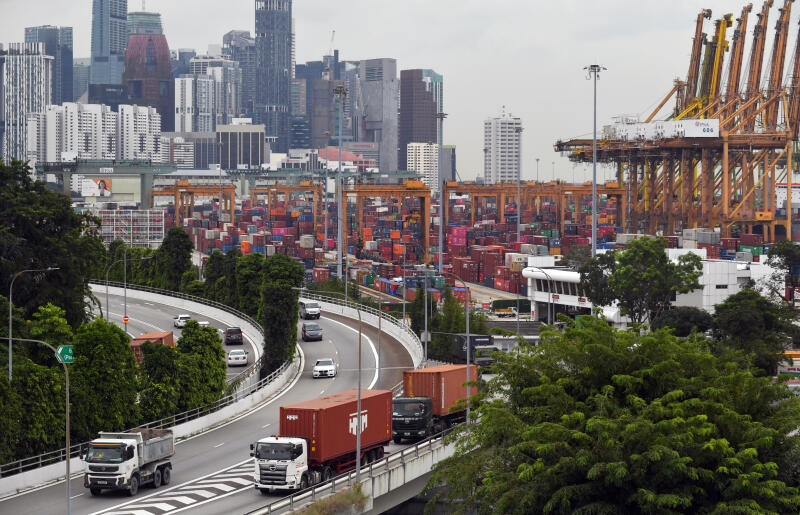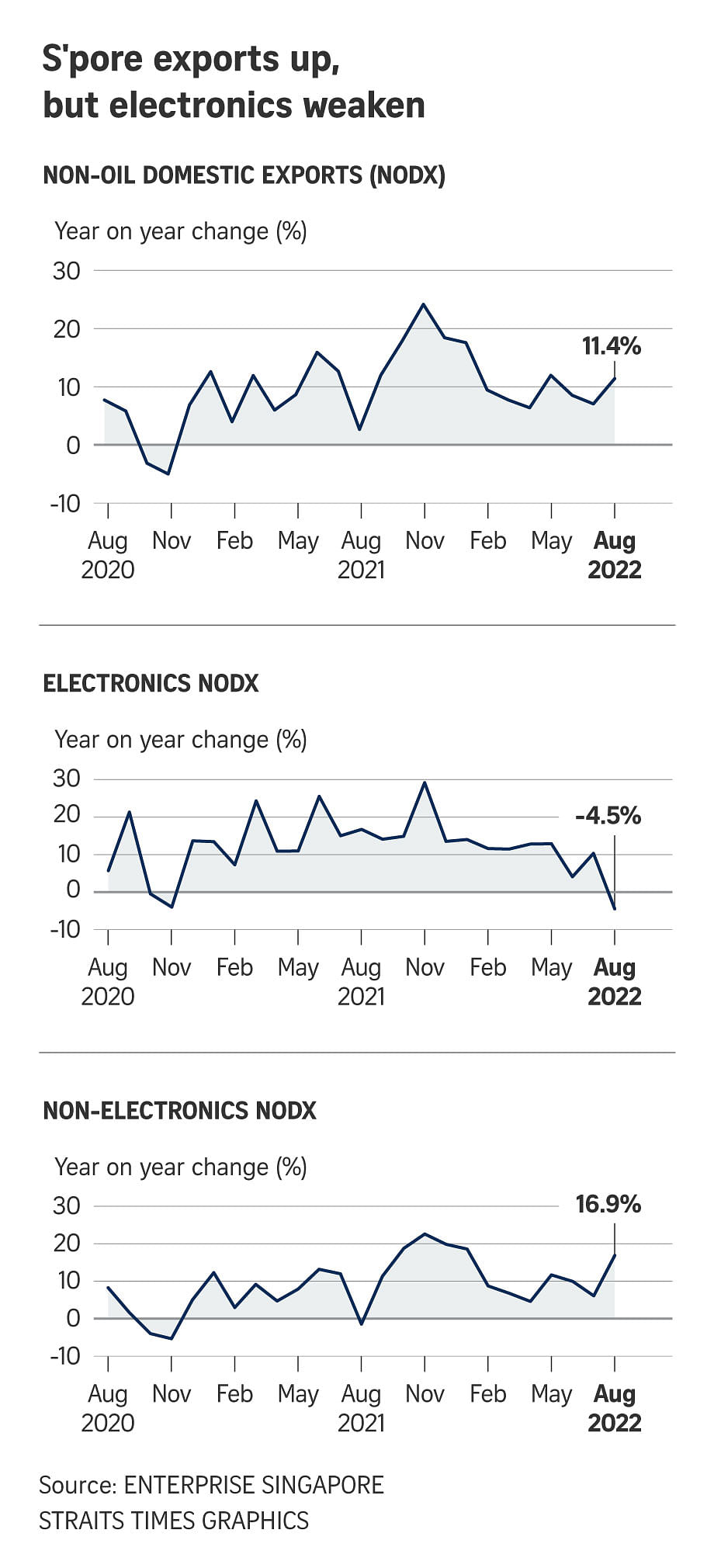S'pore exports grow 11.4% in August; electronics shrink for first time since Nov 2020
Sign up now: Get ST's newsletters delivered to your inbox

On a seasonally adjusted month-on-month basis, however, Nodx shrank 3.9 per cent in August.
PHOTO: ST FILE
Follow topic:
SINGAPORE - Singapore’s key exports continued to grow despite a slowing global economy, driven by an increase in shipments of non-electronic products. However, electronics demand shrank for the first time in almost two years.
Non-oil domestic exports (Nodx) grew 11.4 per cent year on year in August, faster than the previous month's 7 per cent expansion, according to data released by Enterprise Singapore (EnterpriseSG) on Friday.
August’s Nodx reading beat the 8.3 per cent rise forecast by analysts in a Bloomberg poll. It also marked the 21st straight month of year-on-year Nodx growth.
Non-electronic shipments were up 16.9 per cent year on year in August, following the 6.1 per cent growth in the previous month. Structures of ships and boats, pharmaceuticals and food preparations contributed the most to the growth in this segment.
But electronic shipments declined by 4.5 per cent in August, following the 10.3 per cent growth in the previous month. Shipments of integrated circuits (ICs), disk media products and parts of personal computers fell by 6.6 per cent, 21.3 per cent and 23.5 per cent respectively.
Ms Selena Ling, OCBC Bank’s chief economist and head of treasury research and strategy, said the shrinking of electronic exports is the worst in 31 months given the high base in 2021.
Key exports to the top 10 markets rose as a whole in August, supported by demand from the European Union, United States and Indonesia. On the other hand, shipments to China, Taiwan and Hong Kong declined.
Maybank economists Chua Hak Bin and Lee Ju Ye noted in a report that the sharp decline in electronics exports raises the risk of a technical recession - defined as two consecutive quarters of negative GDP growth.
The risk of a technical recession comes as electronics manufacturing stagnates and contracts in the coming months while trade-related services such as wholesale trade and water transport weaken, said the Maybank economists.
“The reopening tailwind is dissipating and will not be strong enough to offset the global headwinds from rising interest rates and inflation.”
UOB senior economist Alvin Liew said that Singapore’s robust Nodx performance to date in 2022 remains in line with the regional economies’ continued recovery.
“We are still cautiously positive on the outlook for some segments of manufacturing but, we are also aware of a potentially much slower electronics performance and weaker demand from North Asian economies that could increasingly weigh on Nodx momentum and manufacturing demand,” he said.
The Nodx outlook ahead remains fraught with concerns of a slowing global economy with demand conditions likely dampened by ongoing global monetary policy tightening, said Ms Ling.

The aggressive global monetary policy tightening is due to persistent inflation amid energy and food security concerns, she added.
Said Ms Ling: “The World Bank is already warning that global growth is slowing sharply but global core inflation rate could stay around 5 per cent in 2023 and global monetary policy tightening could give rise to significant financial stress and trigger a global recession next year.”
Moreover, the geopolitical landscape remains uncertain amid the ongoing Russia-Ukraine war, while the US is also tightening regulations on its shipments of advanced semiconductor chips and chipmaking equipment to China, said Ms Ling.
Singapore’s full-year trade forecasts were raised in August on the back of higher oil prices and electronics demand. Nodx is expected to grow by 5 per cent to 6 per cent, up from the previous forecast of 3 per cent to 5 per cent.

